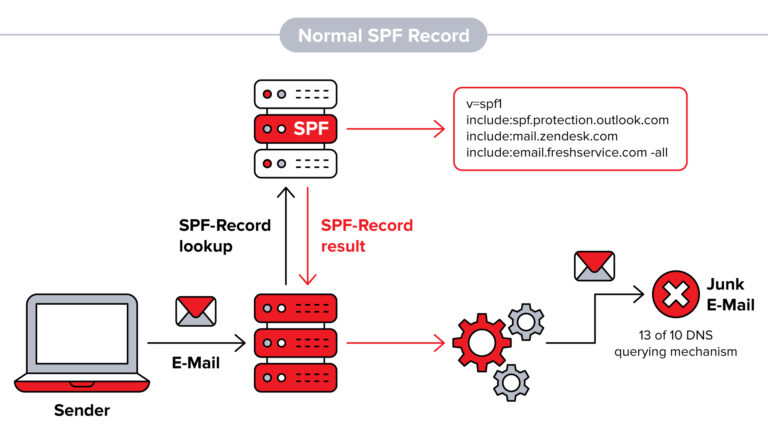SPF, which stands for Sender Policy Framework, is an email authentication method used to verify the sender’s identity and prevent email spoofing. It allows email recipients to check if incoming messages originated from an authorized server for the sender’s domain. SPF helps in reducing spam and phishing attempts by enabling the recipient’s mail server to verify the authenticity of the sender’s domain.
Here’s a simplified explanation of how SPF works for email:
- Domain Owner Sets up SPF Record: The owner of a domain (e.g., example.com) defines an SPF record in their DNS (Domain Name System) settings. This record specifies which mail servers are authorized to send email on behalf of that domain.
- Email Sent from Authorized Server: When someone sends an email claiming to be from example.com, the receiving mail server checks the DNS records of example.com to determine the authorized mail servers for that domain.
- DNS Lookup: The receiving mail server performs a DNS lookup on the sender’s domain to retrieve the SPF record.
- SPF Record Validation: The receiving mail server compares the IP address of the sending server (the server that originated the email) with the list of authorized servers specified in the SPF record.
- SPF Result: Based on the SPF record’s contents and the IP address match, the receiving mail server determines if the email is SPF-compliant or not. The result can be one of the following: “Pass” (the IP address matches an authorized server), “Fail” (the IP address doesn’t match any authorized server), “SoftFail” (the IP address doesn’t match, but the domain owner has indicated that it should still be accepted with caution), or “Neutral” (the domain owner hasn’t expressed a definitive policy).
- Handling of SPF Results: The receiving mail server can use the SPF result to make decisions on how to handle the email. It can accept, reject, mark as spam, or apply other filtering actions based on the SPF policy defined by the domain owner.
By implementing SPF, domain owners can specify which servers are authorized to send emails for their domain, and recipients can verify the authenticity of incoming emails. This helps in reducing the likelihood of spam, phishing, and spoofed emails, as receiving servers can check if the email originated from an authorized source.
